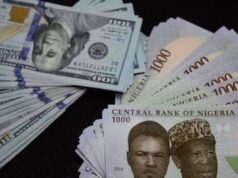…Manufacturing activities continues its expansion path
THUR, FEBRUARY 1 2018-theG&BJournal-The Central Bank of Nigeria (CBN)Purchasing Managers’ Index (PMI) report for the month of January, shows that manufacturing and non-manufacturing activities remained healthy during the month, posting expansions of 57.3 and 58.5 respectively. The latest data show the highest year start indices for both PMIs within the scope of available data from the CBN.
As a leading indicator, January 2018 composite PMI suggests business activities kicked off the year on a positive note, and signals sustained expansion in output growth and reflects business owners and manufacturers optimism about the prospects of the broader economy than a year ago. Compared to January 2017, both manufacturing and non-manufacturing PMIs have improved (from contractions of 48.2 and 49.4 respectively) by 910 bps apiece.
“Clearly, the continued strengthening in the business owners and manufacturers survey result is consistent with notable positives in the overall economy, including the apex bank’s sustained commitment to forex stability, which has helped narrow the spread between the official and parallel segments of the currency market rates, the broadly positive expectation of output growth in the fourth quarter of the year, and indeed 2018 as well as the improving inflationary conditions, with headline inflation rate moderating to 15.37% in December (from 15.90% in November), and therallying crude oil prices,” says Peter Moses, analyst at Cordros Capital, the capital market services company.
Moses adds that they at Cordros Capital believe the composite PMI will remain strong through 2018, as the impact of the positive drivers supporting the encouraging figures deepens further.
“To be clear, we highlight the CBN’s sustained commitment to forex stability, a rebound in aggregate demand, with inflationary pressure moderating further as exchange rate and energy prices post no negative surprises, in addition to a pickup in government spending, in line with the 2018 budget.”
Particularly on forex, suffice to say that confidence has further strengthened vis-à-vis the near term outlook of the domestic currency amid continued healthy accretion to the nation’s foreign reserves which currently stands at a high of USD40.63 billion, with oil prices extending rally to USD69.63/barrel, and increasing crude production (1.86mb/d, according to available data from OPEC).
Manufacturing PMI
The manufacturing PMI kicked off the year on a positive note, expanding to 57.3 (highest year start since available data) in the review period, from a record-high 59.3 in December. The slower pace of expansion in the manufacturing segment is attributable to slowed growth in the major sub-indices that make up the manufacturing PMI – production level (59.6, previously 63.2), new orders (58.3, previously 60.0), supplier delivery time (56.8, previously 57.4), employment level (53.3, previously 53.9), and WIP inventory (57.7, previously 61.1). The sustained stability of the naira exchange rate, coupled with the widely positive outlook for the currency, remains a major driver of the sustained expansion in the composite manufacturing PMI.
Of the 16 subsectors, 13 reported growth in the review month in the following order: computer & electronic products; nonmetallic mineral products; cement; textile, apparel, leather & footwear; printing & related support activities; appliances & components; primary metal; petroleum & coal products; food, beverage & tobacco products; furniture & related products; paper products; fabricated metal products; plastics & rubber products. The electrical equipment; chemical & pharmaceutical products; and transportation equipment subsectors contracted in the review month.
Non-Manufacturing PMI
Similar to the manufacturing PMI, non-manufacturing PMI increased at a slower pace of 58.5 (vs. record-high 62.1 in the previous month) in January, following decelerating growth in the major sub-indices that make up the composite index. Specifically, expansions in business activity slowed to 61.3 (from 67.4) while level of new orders recorded 58.2, compared to 62.2 in December. Also, employment level was lower at 55.1 (55.7 the previous month), while inventory expanded to 59.5, below January’s 62.9.
Sixteen of the 18 non-manufacturing subsectors recorded growth in the following order: public administration; repair, maintenance/washing of motor vehicles; educational services; water supply, sewage & waste management; transportation & warehousing; real estate rental & leasing; arts, entertainment & recreation; information & communication; agriculture; finance & insurance; professional, scientific, & technical services; wholesale/retail trade; health care & social assistance; electricity, gas, steam & air conditioning supply; utilities; construction; and management of companies. The management of companies remained unchanged, while the accommodation & food services subsector recorded contraction in the review period.









